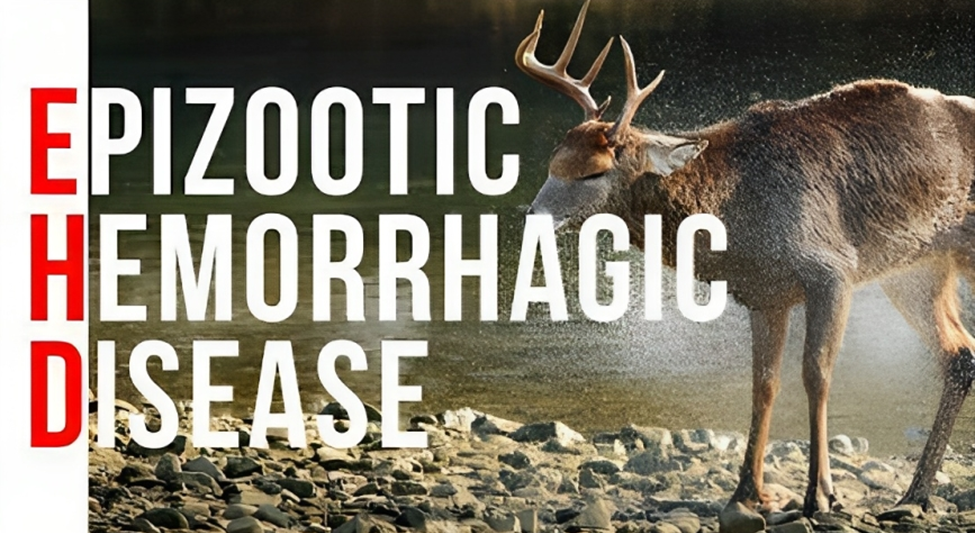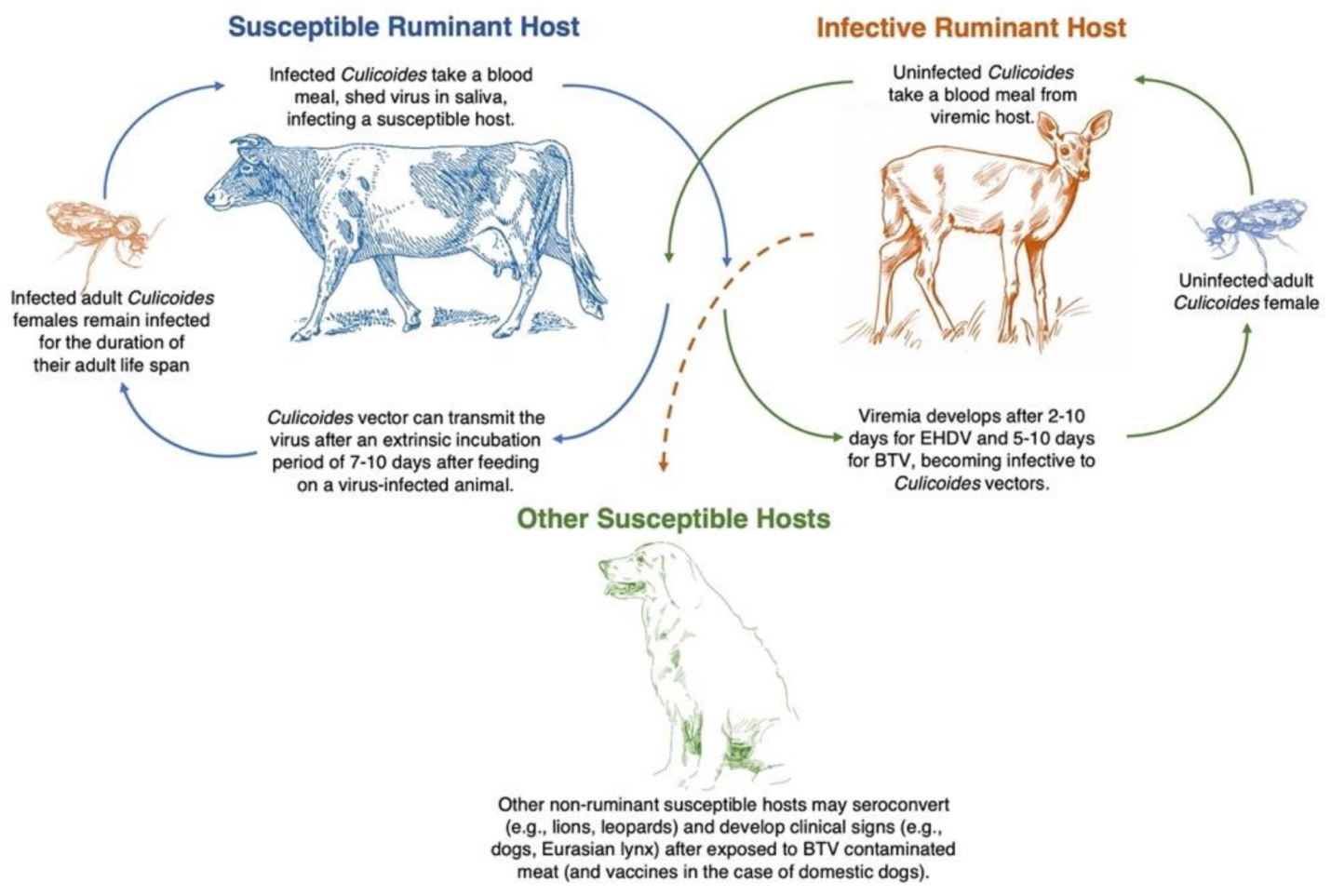





Copyright infringement not intended
Picture Courtesy: Afflictor Broadheads
Context: Epizootic haemorrhagic disease (EHD) has caused more than 150 outbreaks in Spain, Portugal and southern Italy since November last year. The disease affects cows, deer and sheep and is transmitted by midges that carry the virus.
Details
Epizootic Hemorrhagic Disease (EHD)
About

Picture Courtesy: www.mdpi.com
Symptoms of EHD
Impact on affected livestock populations and the agricultural industry
Morbidity and Mortality
Trade Restrictions
Economic Losses
Epizootic Hemorrhagic Disease (EHD) presents several challenges
Vector-Borne Transmission
Environmental Factors
Climate Change
Cure and Prevention
Vector Control
Vaccination
Movement Restrictions
Surveillance and Early Detection
Education and Awareness
Way Forward
|
PRACTICE QUESTION Q. Consider the following statements in the context of the Epizootic Hemorrhagic Disease (EHD) 1. It is caused by viruses belonging to the Orbivirus genus. 2. It is primarily transmitted through the bites of infected midges (Culicoides species). 3. It primarily affects ruminant animals, including cattle, deer, sheep, and goats. 4. There is no specific cure for EHD, and treatment primarily focuses on supportive care for affected animals. How many of the above statement is/are correct? A) Only one B) Only two C) Only three D) All four Answer: D Explanation: Statements 1 and 2 are correct: EHD is caused by viruses that belong to the Orbivirus genus. These viruses are part of the Reoviridae family and are responsible for causing the disease in ruminant animals. EHD is primarily transmitted through the bites of infected midges, specifically Culicoides species. These tiny insects serve as vectors, carrying the virus from one animal to another when they feed on blood. Statement 3 is correct: EHD primarily affects ruminant animals, which include cattle, deer, sheep, and goats. These animals are particularly susceptible to the disease, and outbreaks can result in significant morbidity and mortality in affected populations. Statement 4 is correct: There is no specific cure for EHD. When animals are infected, treatment primarily involves providing supportive care to manage their symptoms and help them recover. This may include addressing fever, dehydration, and other clinical signs to improve the animal's overall condition. |
https://news.sky.com/story/epizootic-haemorrhagic-disease-uk-authorities-closely-monitoring-spread-of-fatal-cow-disease-in-europe-12960340






© 2025 iasgyan. All right reserved